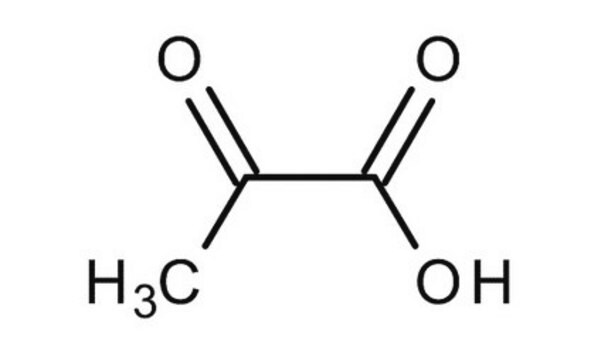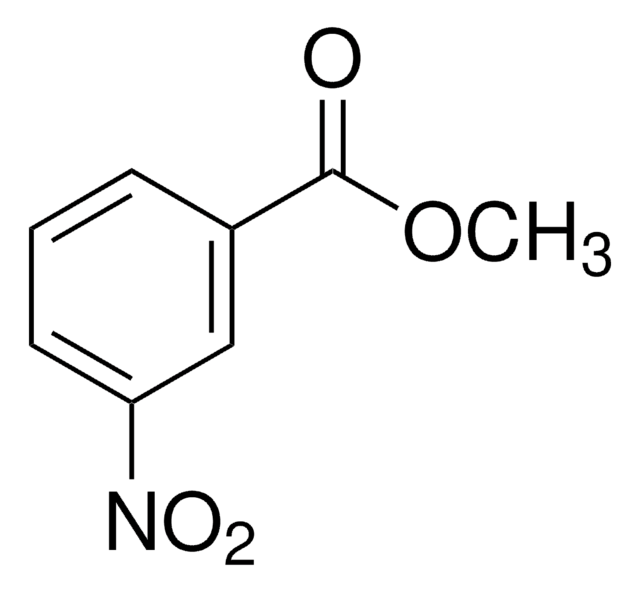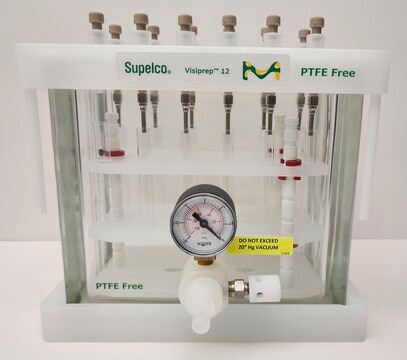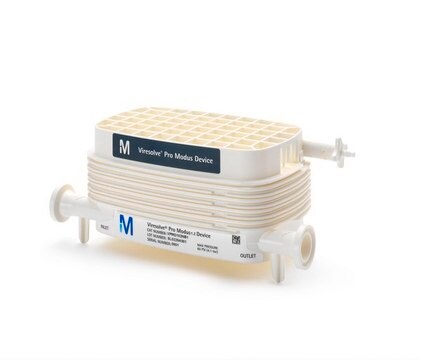W297070
Pyruvic acid
natural, ≥95%, FG
Synonyme(s) :
α-Ketopropionic acid, 2-Oxopropionic acid
About This Item
Halal
Kosher
natural
Produits recommandés
Qualité
FG
Halal
Kosher
natural
Niveau de qualité
Conformité réglementaire
EU Regulation 1334/2008 & 178/2002
FDA 21 CFR 172.515
Essai
≥95%
Caractéristiques du produit alternatif plus écologique
Less Hazardous Chemical Syntheses
Use of Renewable Feedstocks
Learn more about the Principles of Green Chemistry.
sustainability
Greener Alternative Product
Indice de réfraction
n20/D 1.428 (lit.)
pb
165 °C (lit.)
Pf
11-12 °C (lit.)
Densité
1.267 g/mL at 25 °C (lit.)
Application(s)
flavors and fragrances
Documentation
see Safety & Documentation for available documents
Allergène alimentaire
no known allergens
Autre catégorie plus écologique
Propriétés organoleptiques
caramel; acidic; sour
Chaîne SMILES
CC(=O)C(O)=O
InChI
1S/C3H4O3/c1-2(4)3(5)6/h1H3,(H,5,6)
Clé InChI
LCTONWCANYUPML-UHFFFAOYSA-N
Vous recherchez des produits similaires ? Visite Guide de comparaison des produits
Catégories apparentées
Description générale
Application
- Efficient synthesis of L-malic acid by malic enzyme biocatalysis with CO2 fixation.: This study highlights the biocatalytic synthesis of L-malic acid from pyruvic acid, demonstrating an efficient CO2 fixation process. The research opens new pathways for sustainable chemical production using pyruvic acid as a precursor (Shi et al., 2024).
- H(2)S-Powered Nanomotors for Active Therapy of Tumors by Inducing Ferroptosis and Lactate-Pyruvate Axis Disorders.: This study demonstrates the use of hydrogen sulfide-powered nanomotors for tumor therapy, inducing ferroptosis and disrupting the lactate-pyruvate metabolic axis, showcasing innovative applications of pyruvic acid metabolism in cancer treatment (Wang et al., 2024).
Actions biochimiques/physiologiques
Mention d'avertissement
Danger
Mentions de danger
Classification des risques
Eye Dam. 1 - Skin Corr. 1C
Code de la classe de stockage
8A - Combustible corrosive hazardous materials
Classe de danger pour l'eau (WGK)
WGK 1
Point d'éclair (°F)
183.2 °F - closed cup
Point d'éclair (°C)
84 °C - closed cup
Équipement de protection individuelle
Faceshields, Gloves, Goggles, type ABEK (EN14387) respirator filter
Faites votre choix parmi les versions les plus récentes :
Déjà en possession de ce produit ?
Retrouvez la documentation relative aux produits que vous avez récemment achetés dans la Bibliothèque de documents.
Les clients ont également consulté
Notre équipe de scientifiques dispose d'une expérience dans tous les secteurs de la recherche, notamment en sciences de la vie, science des matériaux, synthèse chimique, chromatographie, analyse et dans de nombreux autres domaines..
Contacter notre Service technique









